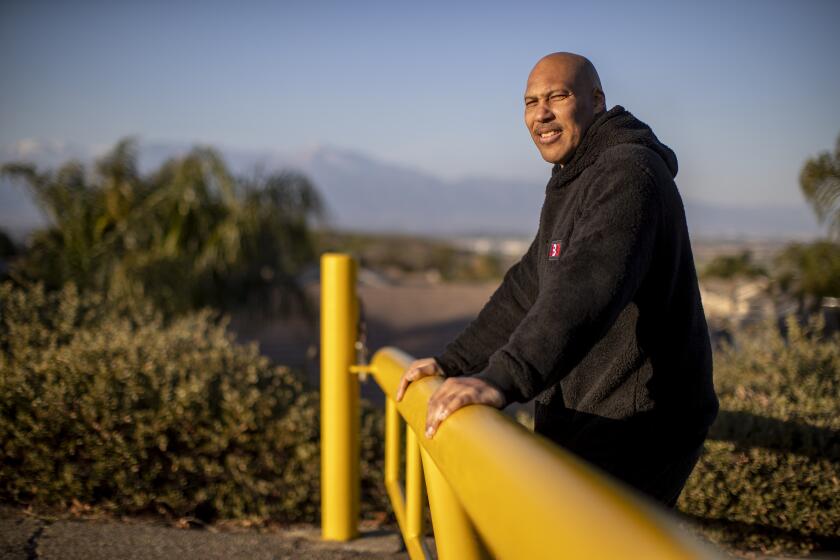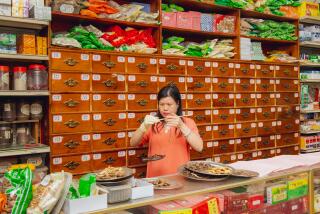In the pandemic, Asian Americans relish the cozy family ritual of hot pot
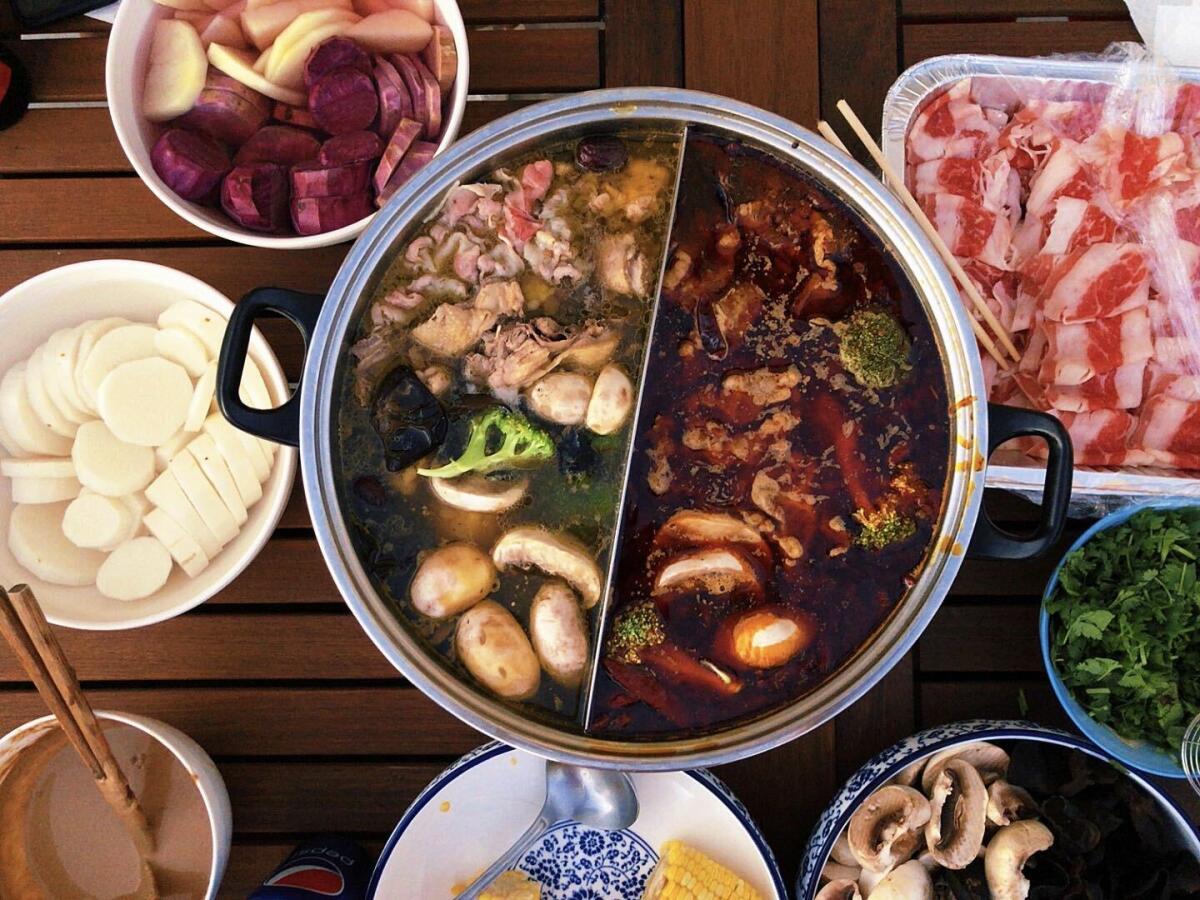
- Share via
In this time of isolation, fear and grief, Americans are baking bread and cookies, simmering chili and pozole for hours, digging into buttery mashed potatoes.
And some are firing up their hot pots.
When Jessica Wu needs a taste of home, a warmth in her stomach to fend off pandemic malaise, she puts a pot of soup at the center of her dining table, a portable electric stove keeping the liquid at a constant boil. She dunks raw ingredients — thinly sliced lamb, tofu, shrimp balls, corn on the cob, mushrooms, cabbage — into the soup one bite at a time, just a few seconds for meat, longer for the vegetables.
In Japanese, it is called shabu shabu — “swish swish,” for the motion diners make with their chopsticks when blanching a mouthful. In Mandarin, it is huoguo, meaning hot pot, with broth that can range from a mouth-numbing Sichuan peppercorn concoction to a milky herbal mix. Vietnamese people call it lau — “to scoop” or “to fish out.”
Korean hot pot, jeongol, is said to have originated from cooking in soldiers’ iron helmets — called jeonlip — in a long-ago time of need.
With its large and diverse Asian immigrant population, the L.A. area is an epicenter of hot pot. The dish can be eaten any time of year but is associated with winter, the first hint of a chill in the air prompting families to stock up on butane fuel canisters and fire up their portable stoves.
Asian supermarkets stock containers of razor-thin pork, lamb and beef. Restaurants offer single-serving hot pots and large cauldrons for sharing.
During the COVID-19 pandemic, the groups gathered around the communal bubbling pot have grown smaller, extended families shrinking to threesomes or foursomes. Hot pot is not well suited for takeout, and restaurants that specialize in the dish are struggling.
But Wu and her cousin, Alice Fang, who share an Alhambra apartment, have been eating hot pot at home more frequently, on holidays like the Lunar New Year and on ordinary evenings when they crave a warm soup.
It is a leisurely meal, customizable with the ingredients each prefers, a time to bond with each other as they fish mouthful after mouthful out of the boiling soup into a dipping sauce of sesame paste, soy, salt, sugar and pimentos.
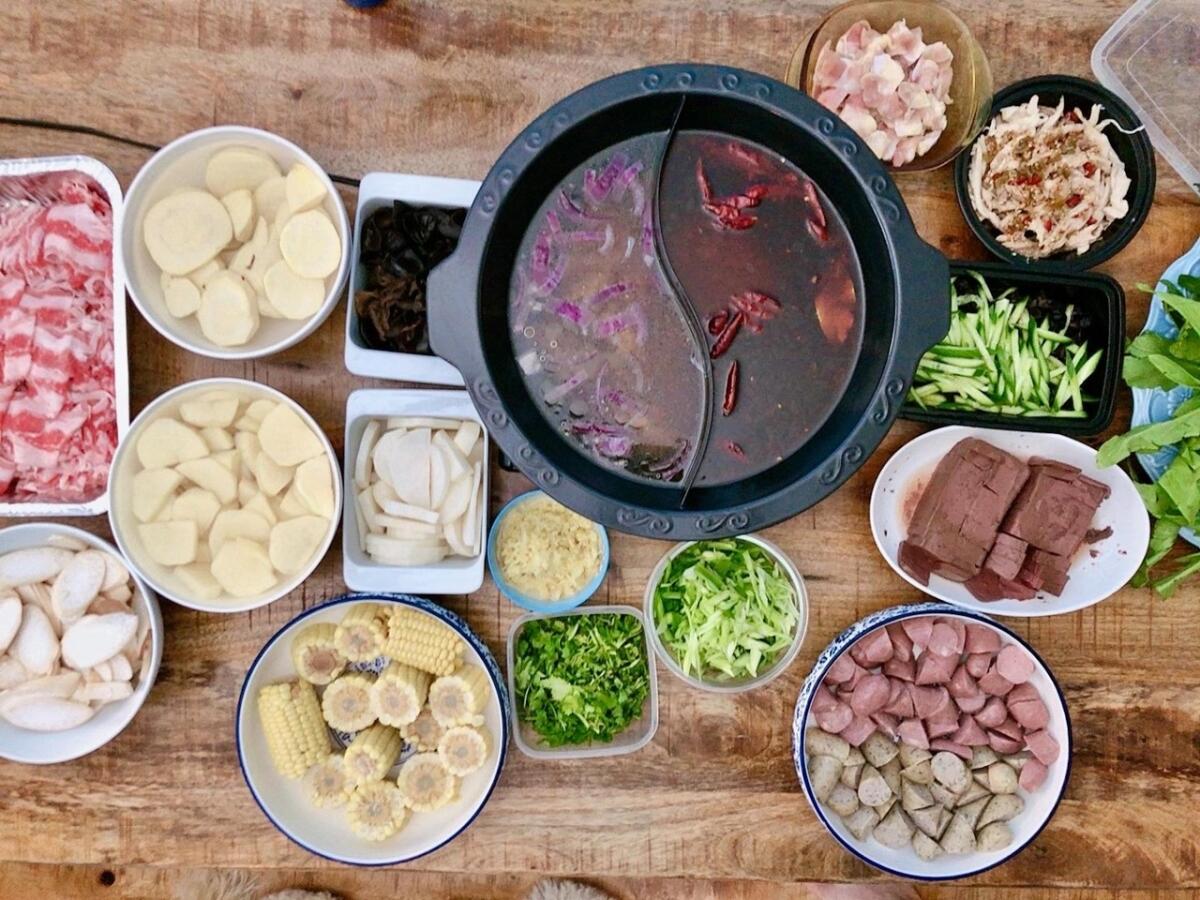
Wu is from China’s frigid Heilongjiang province near the Russian border, and Fang is from Beijing. The dish they shared with their families in China is still satisfying in their adopted home, even with fewer people at the table and no snow on the ground.
As the evening wears on, the soup in each side of the pot, which has a curved divider so Wang can keep her broth of sunflower oil, fermented soybeans and goji berries separate from Fang’s mushroom broth, absorbs the flavors of the dipped ingredients.
“Hot pot is about spending time with your family eating good food,” said Fang, 33, an accountant.
In Southern California, the term “hot pot” usually conjures up the Chinese style, with all its regional variations, said UC Irvine history professor Yong Chen, author of the culinary guide “Chop Suey, USA: The Story of Chinese Food in America.”
There is Beijing Mongolian hot pot with lamb, Chongqing hot pot with chili and Sichuan peppercorn, and Taiwanese hot pot with a dipping sauce of satay and raw egg.
In China, hot pot has become increasingly commercialized as a dish eaten in restaurants more than at home. Hot pot chains such as Little Sheep and Hai Di Lao have moved into the San Gabriel Valley and Orange County, touting their regional authenticity.
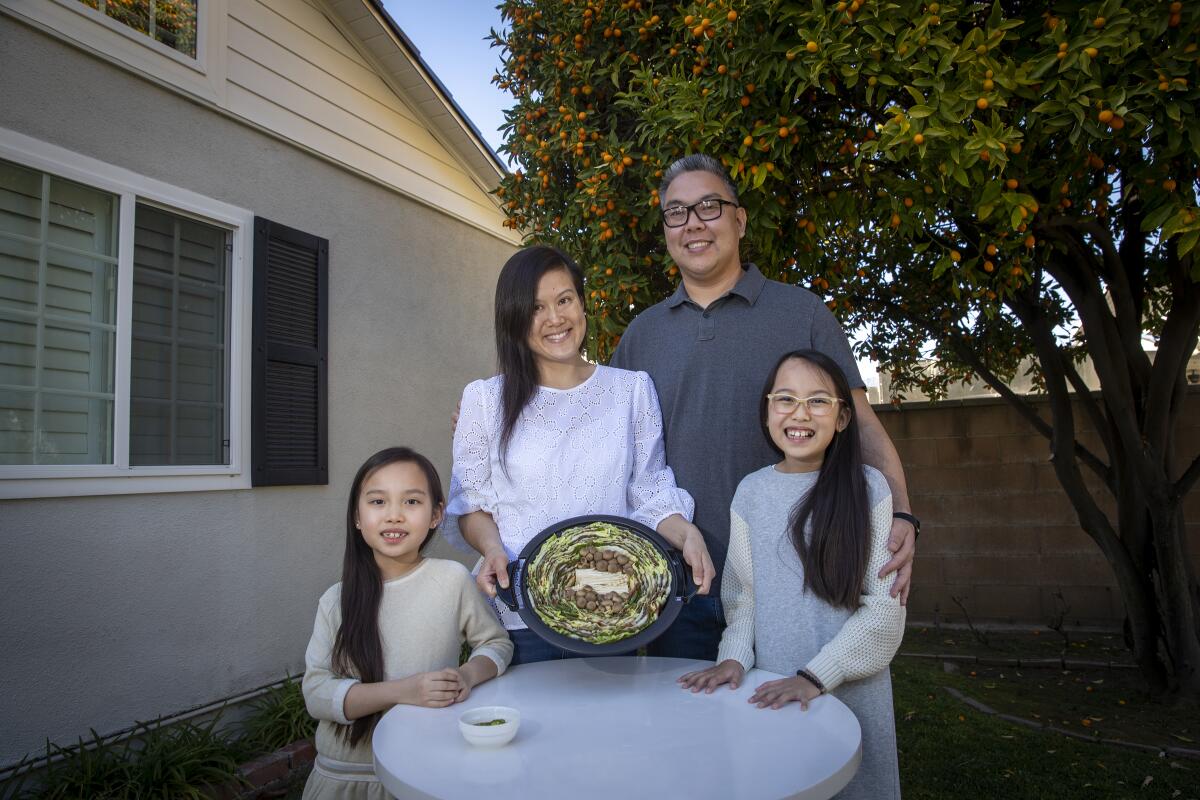
With their worldwide presence, they are better equipped to weather the pandemic’s restrictions on indoor dining than local chains such as Uniboil, which closed four of its six locations during the pandemic.
“Numerous famous and big Chinese hot pot restaurants have opened branches in the United States, becoming a favorite among young people,” Chen said. “Such restaurants have become a popular place to hang out or meet friends.”
For some Asian Americans, the way they eat hot pot reflects their multicultural backgrounds.
Loretta Lee of San Gabriel is Chinese American and her husband, Howard Lee, is of Korean and Chinese descent.
Sometimes, the Lees and their two daughters eat a Japanese stew called nabe in which the ingredients — Wagyu beef, nappa and perilla leaves — are added in advance rather than cooked by each diner at the table.
Other times, they opt for Chinese hot pot in the Sichuan mala — numb-spicy — style. Emma, 10, and Zoey, 8, prefer a mild mushroom broth.
For Howard Lee, no meal is complete without kimchi, which he has on the side or in the soup.
On the Lunar New Year in February, the Lees shared a hot pot, traditional in some families on the holiday.
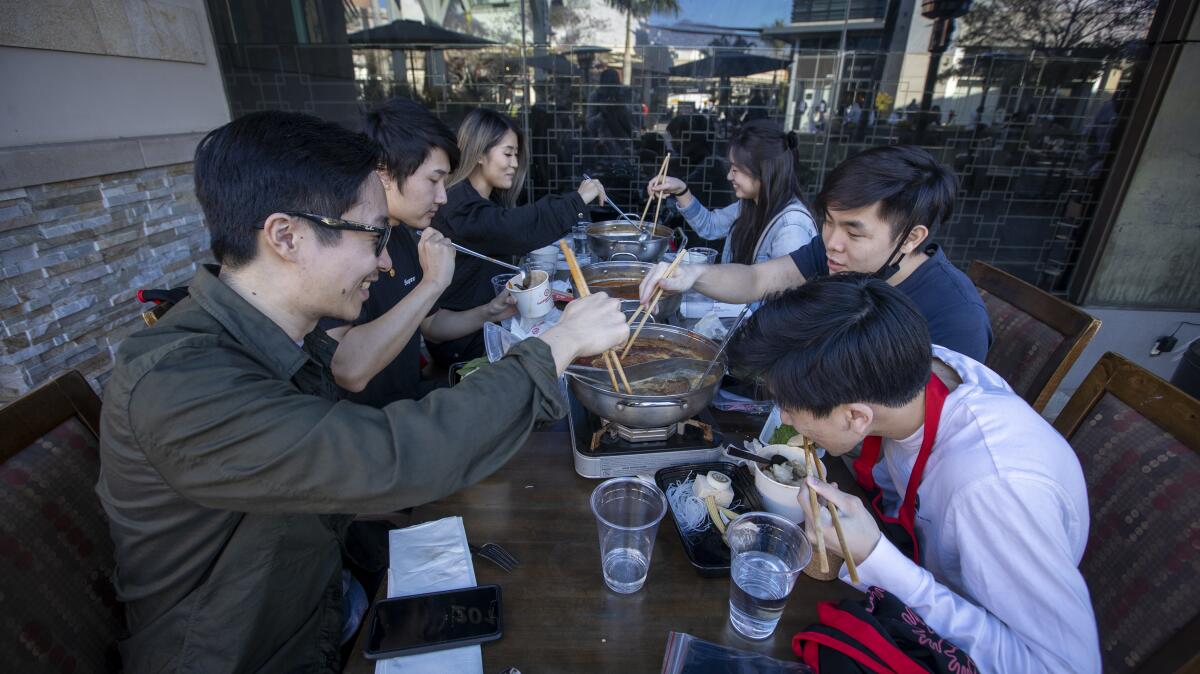
Usually, they host a large party. This year, it was the four of them.
“Hot pot is about family and togetherness,” said Howard Lee, 39, who grew up in the San Gabriel Valley and works in the film industry. “Before COVID-19, we would have cousins, aunts, uncles and grandparents over to eat. But at least we’re together.”
At Hai Di Lao in Arcadia, the outdoor dining area recently reopened after coronavirus numbers improved and L.A. County lifted restrictions.
Founded in Sichuan province in 1994, the restaurant has more than 900 locations worldwide, according to its website. Its name means “scooping from the ocean floor.”
When LaVar Ball moved to Chino Hills to start a family, he found a planned community that matched his own ambition. A fascinating relationship ensued.
On a recent weekend, Temple City resident Amber Wu and her boyfriend, Preston Huang, both 22, shared a table on the patio, ordering personal, single-serving hot pots.
For Huang, it was Sichuan style with a spicy pork base, short ribs, prime rib-eye, tofu, enoki mushrooms, garlic, onions and chile flakes.
Wu chose a milder tomato base with lamb, bok choy, bamboo shoots, sweet corn and mushrooms.
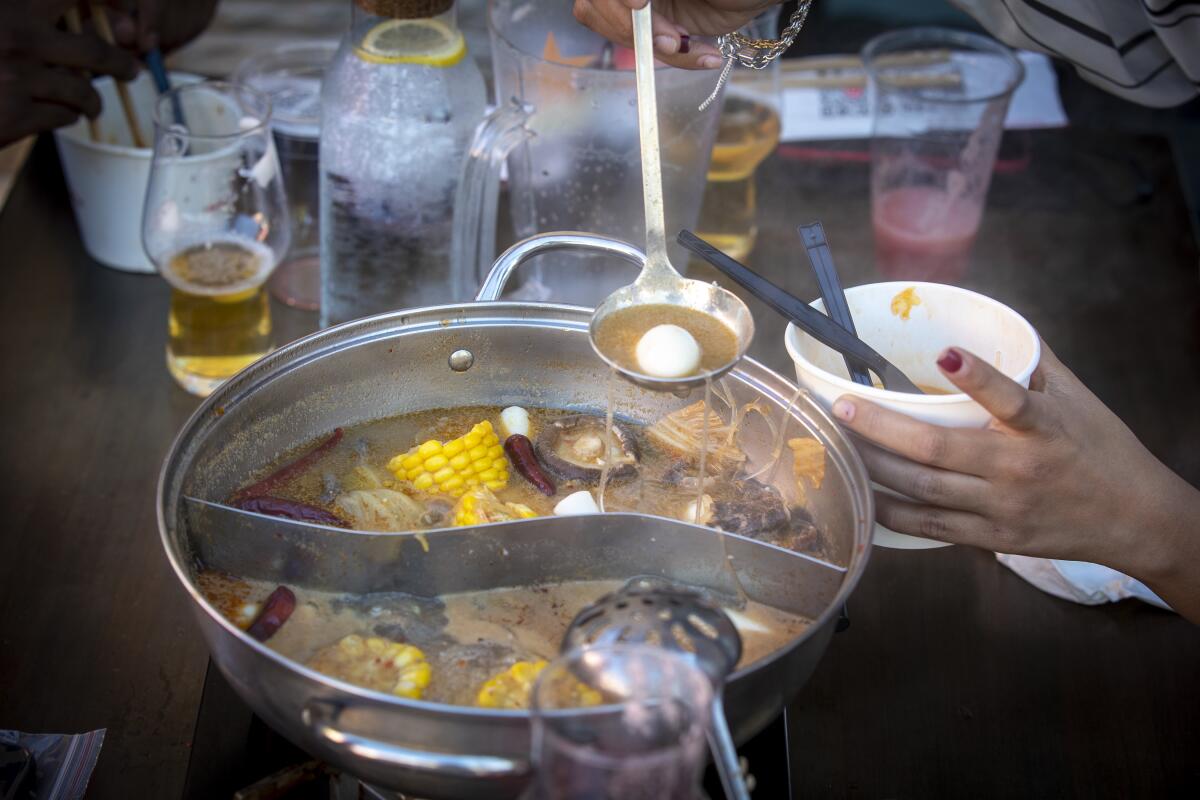
The previous February, Wu had gathered with 20 friends and family at her aunt’s home in Monterey Park to watch the Super Bowl and feast on Taiwanese-style hot pot — chicken broth, beef, cabbage, carrots and shiitake mushrooms.
“Hot pot has meant big family meals, and today it’s just us,” Wu said. “It’s the same food, but it’s different.”
Alan Pun, a native of Hong Kong, opened a hot pot restaurant in Rowland Heights in 2015.
With a menu of one-person hot pots including Sichuan pepper pork feet and Korean army stew, Pun expanded Uniboil to five other locations.
Wet sweatshirts. Toddler shoes. A line of Scripture. These are some of the things left behind by migrants making their way across the Rio Grande.
But the pandemic devastated his business. He now has only two restaurants left, despite offering free portable stoves, pots and fuel so customers could heat up their hot pots at home.
“It was hard because … we followed all procedures and we tried, we really tried,” said Pun, 37. “We couldn’t get enough people to buy takeout.”
Now, Pun has more time to spend with his family. He used to be too busy with his hot pot restaurants to enjoy the dish with his two children, wife and in-laws, who share a home in Covina.
On a recent weekend, they dunked fishballs, tofu, squid and shrimp into a Cantonese-style hot pot.
“Hot pot has always been a part of my life, but now again, it’s something I can enjoy with my entire family,” Pun said. “I’m so happy for that.”
More to Read
Sign up for Essential California
The most important California stories and recommendations in your inbox every morning.
You may occasionally receive promotional content from the Los Angeles Times.
